If you have read the other articles in this series, you know I mention David Esterly frequently. That’s for a very good reason. David was the world’s foremost expert on the carvings of Grinling Gibbons. So much so that he published books about Gibbons and became the carver chosen to reproduce the carving lost in the 1986 fire at Hampton Court Palace.
While a young man, David was completing a doctorate in English Literature and planning to become an academic in that field when his fiancé dragged him into St. James Piccadilly to see some woodcarvings. He describes it as “being thunderstruck.” His first action was to change his direction from English Lit to research about Gibbons, thinking he would pursue an academic career of writing about Gibbons. That too changed when, trying to understand how Gibbons worked, he clamped a piece of limewood to a garden table and started passing a gouge through it. As he says, “…the genie flew out of the bottle.” The rest was many years of self learning from a long dead mentor: Gibbons.
David lived and worked in upstate New York, north of Utica. He only once imitated Gibbons directly, when he was making the replacement for the lost carving at Hampton Court Palace. The rest of his work is distinctively his own. He sent the photo at the right with the note: “Incidentally the most Gibbonsy piece I’ve ever done, to my mind, was this overmantel I carved shortly after returning from Hampton Court. It contains some modified Hampton Court-ish elements in it, as I think you can see.”
His own foliage carving and botanical forms are distinctly different from Gibbons in style, but not in technique. The very high relief, the thinness of elements, the airiness of compositions, and the construction in layers are all derivations of Gibbons’ techniques. But the carvings are purely Esterly’s.
On the topic of imitation, David says:
“Don’t copy Gibbons or Arcimboldo or the Dutch still life painters; steal from them.
Revive the old vessels — letter rack, portrait bust, trophy, overmantel, drop
— but pour new wine into them.” (emphasis mine)
Floral carvings
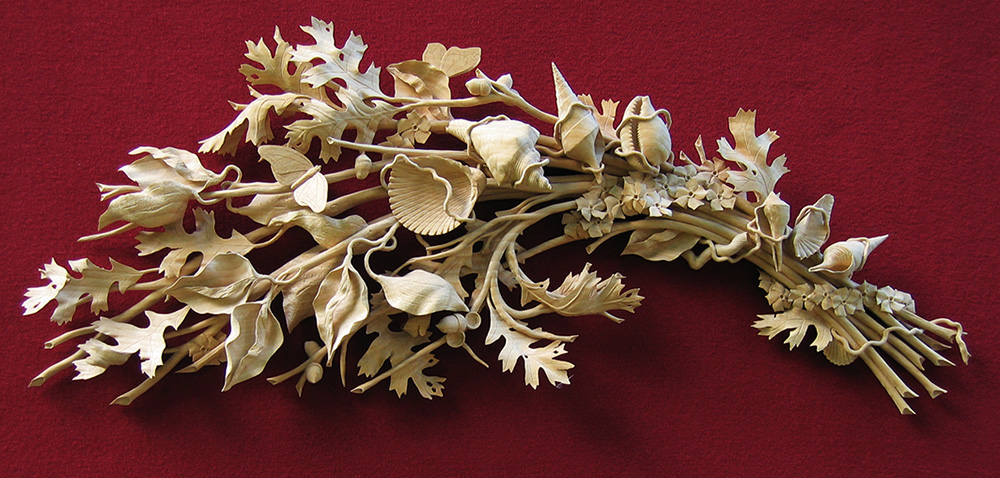
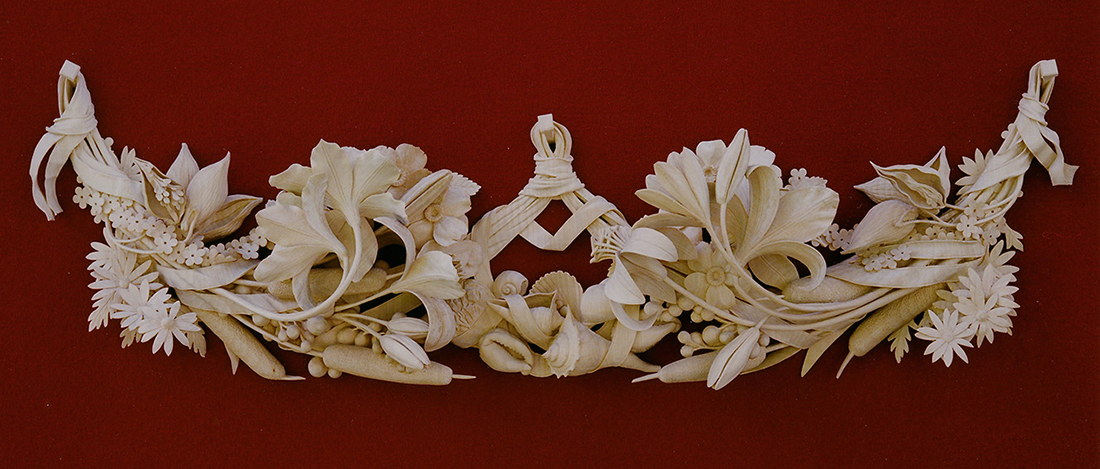
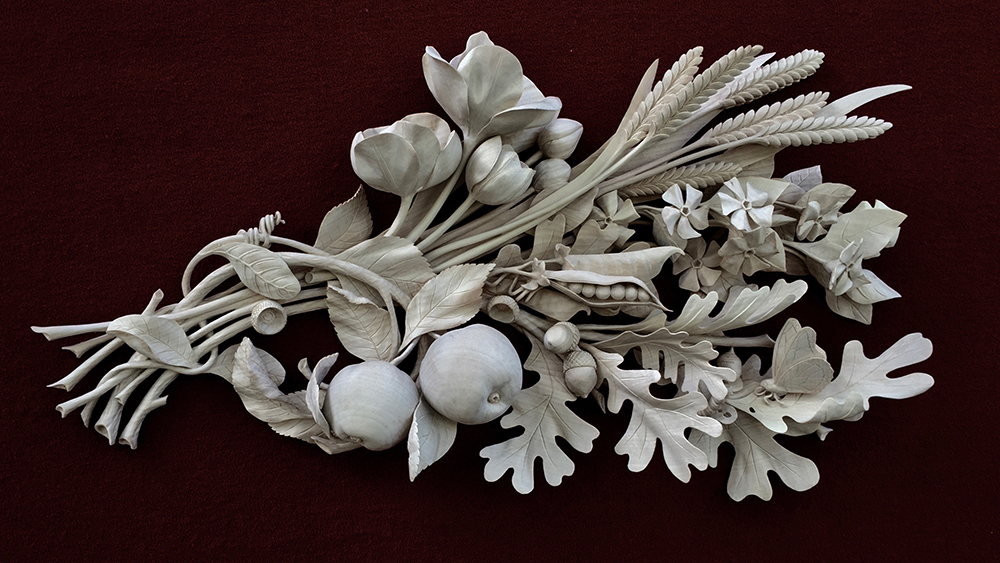
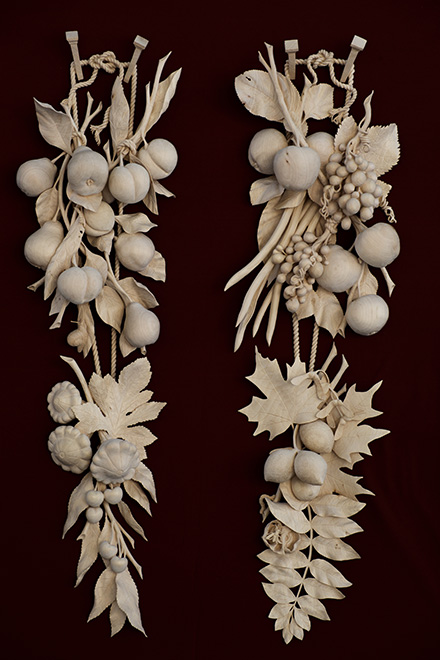
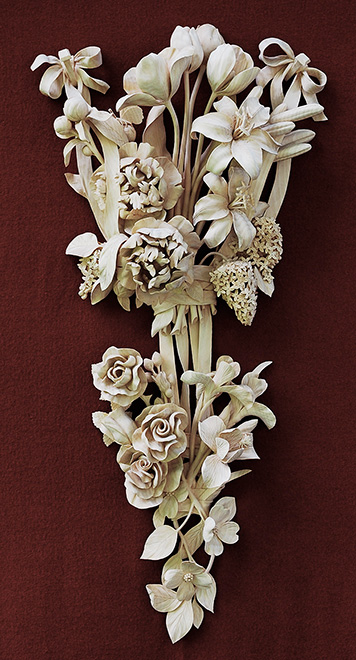
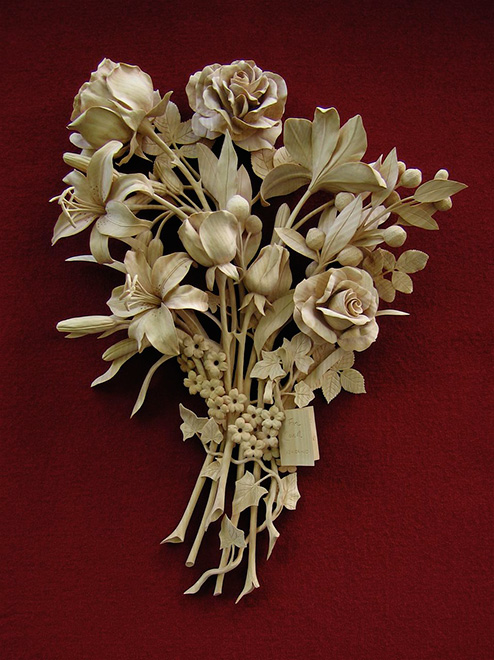
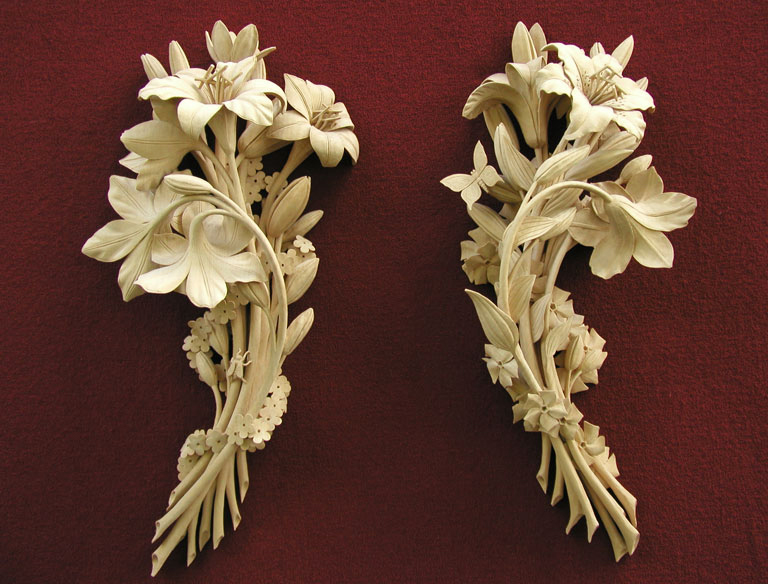
Botanical heads
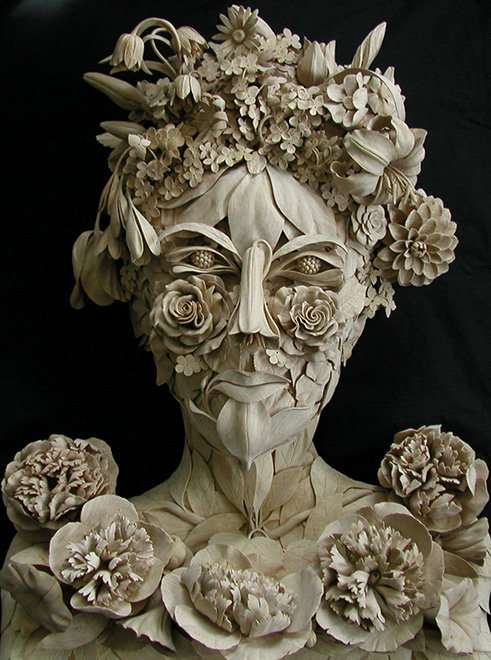
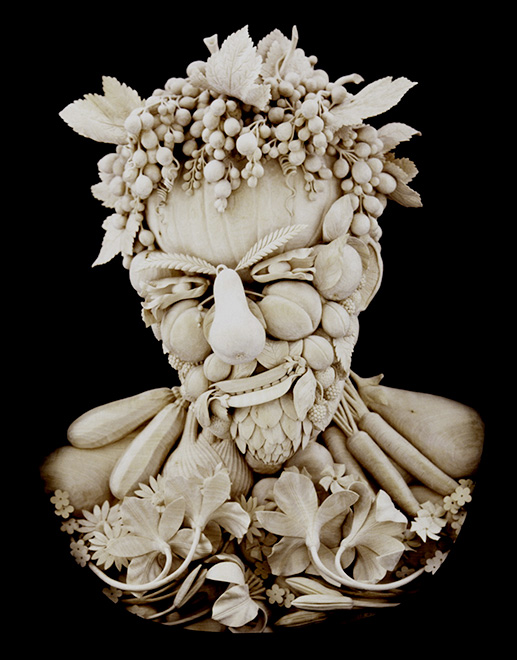
Trophies
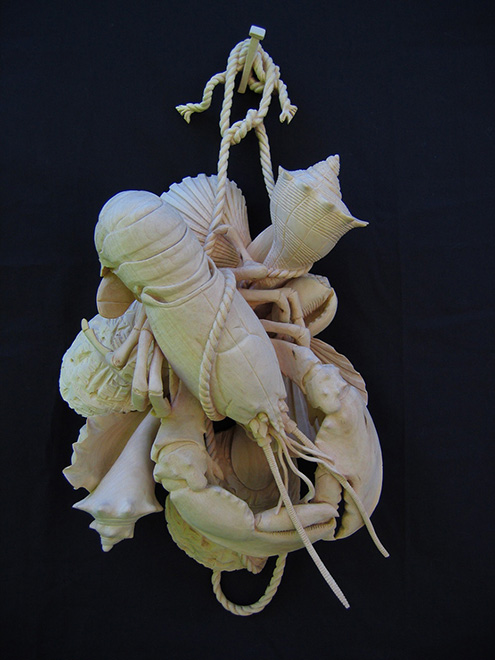
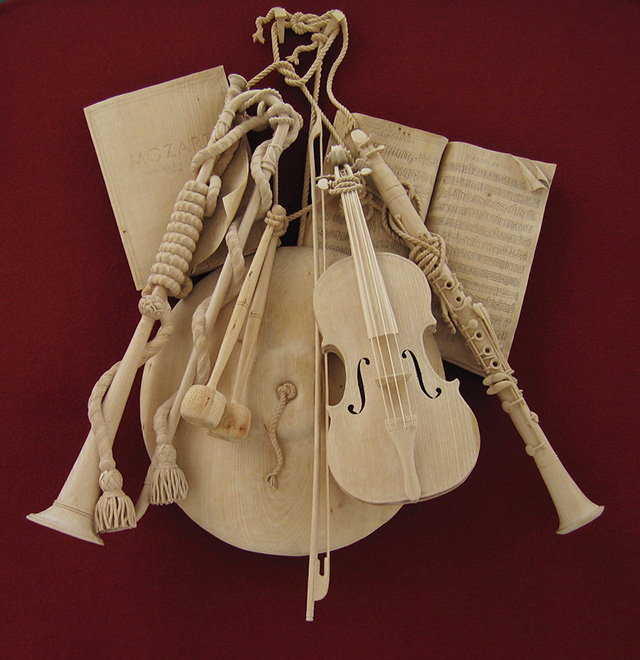
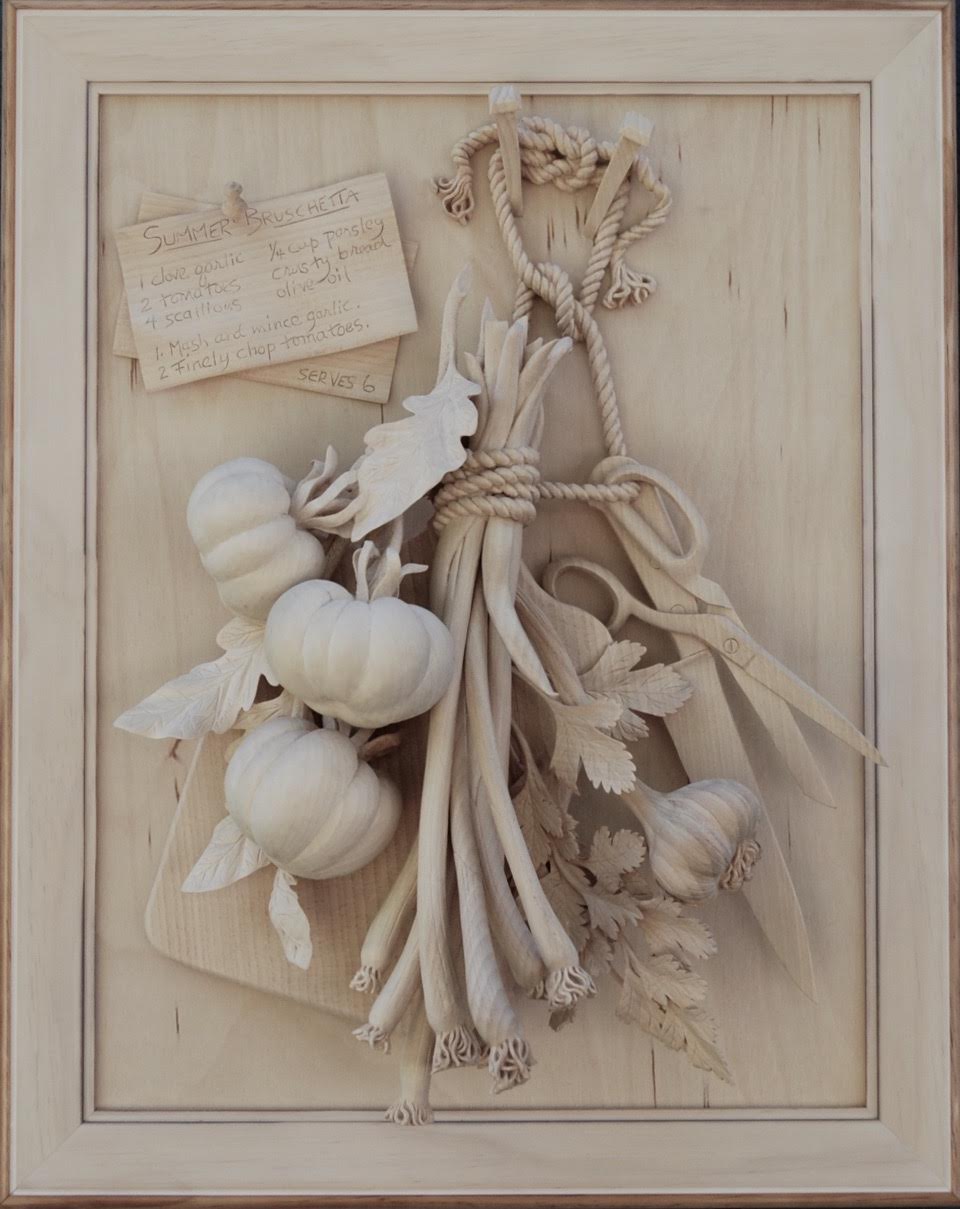
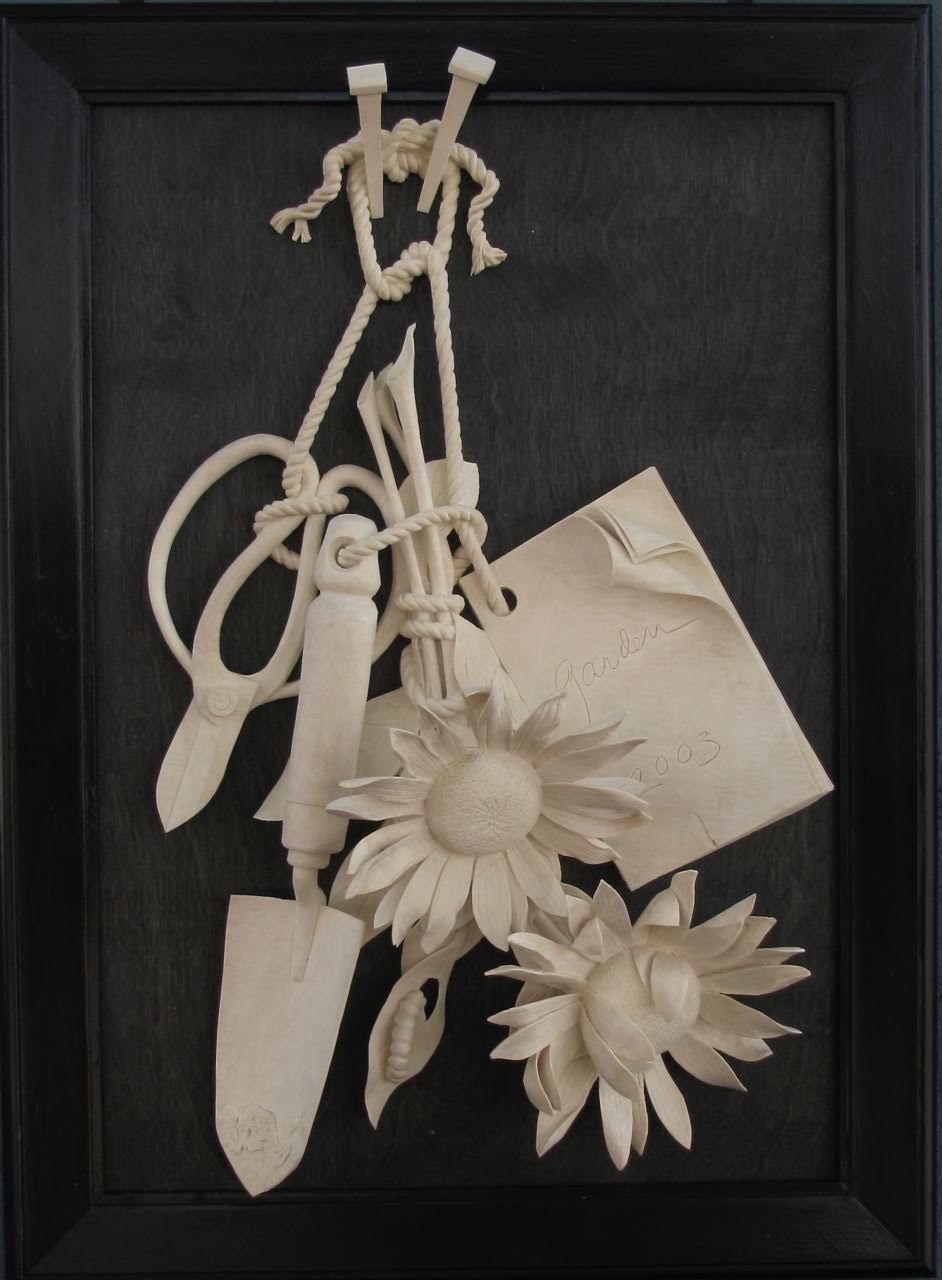
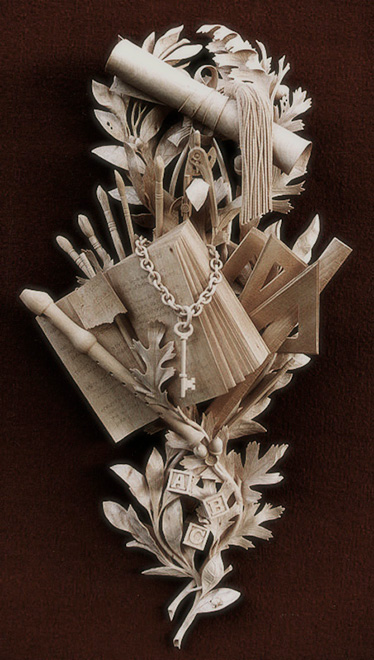
Letter racks
David recently pursued wunderkammer, or letter racks. Long ago, I was delighted at finding many drawings and paintings of letter racks as trompe-l’œil artworks. Now, I’m delighted in seeing letter racks in wood. David mentions, in the CBS video I think, that letter racks fascinate him because they serve as portraits, of the person who owns them. I agree, and am also fascinated with how he carved them … and like Gibbons’ work, I long for yet more detail.
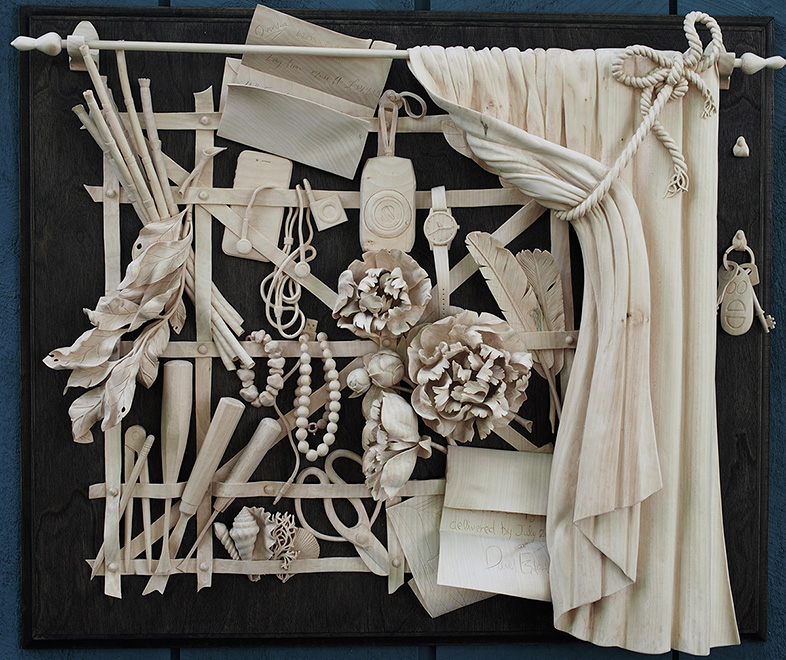
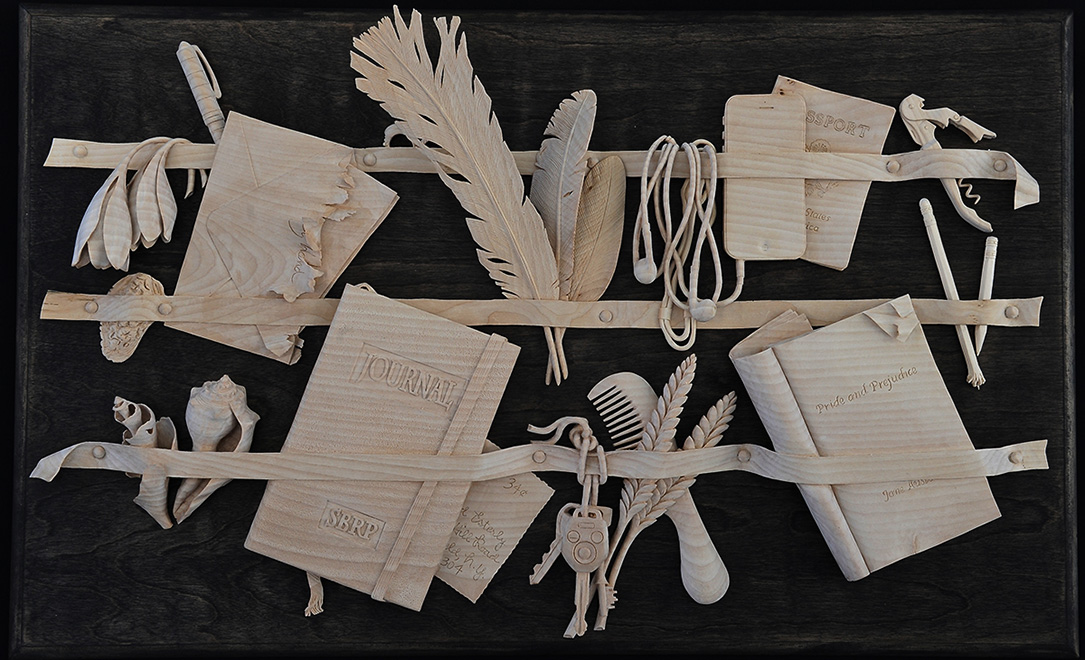
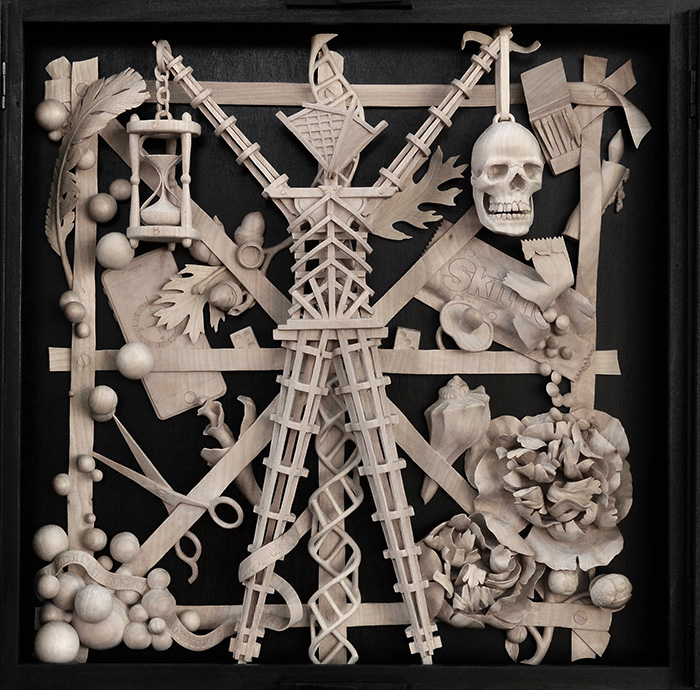
At the carving bench
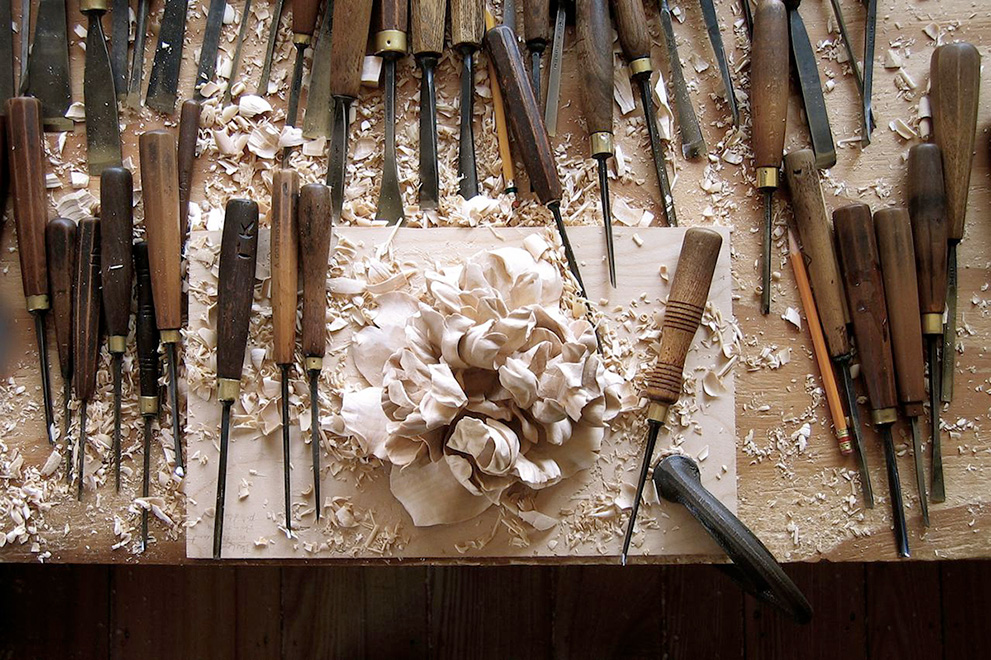
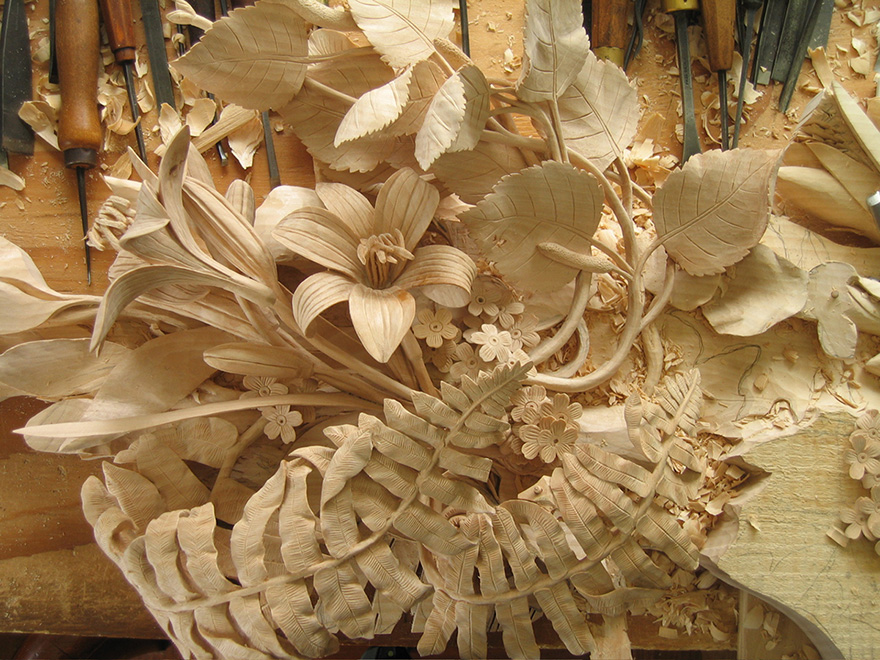
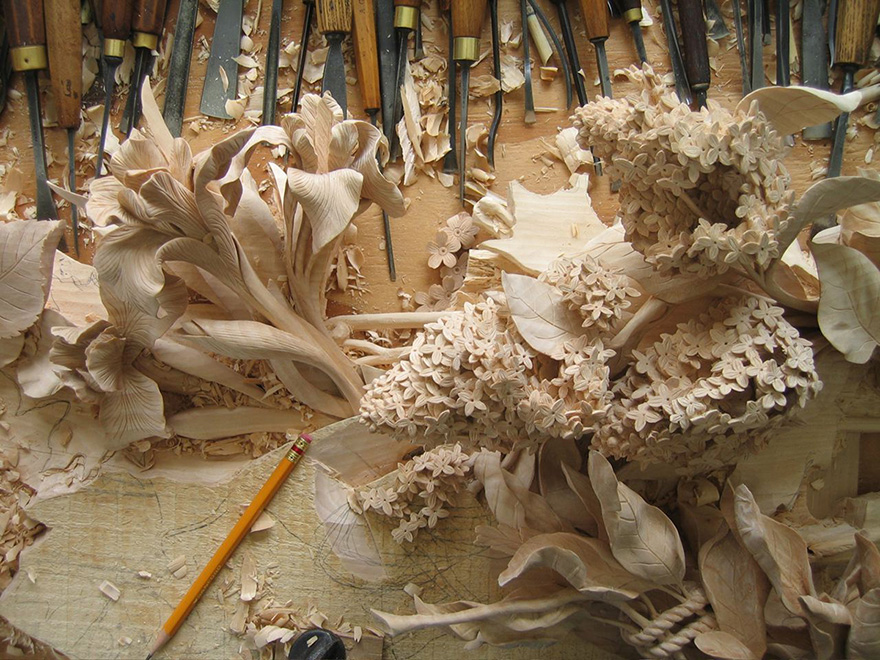
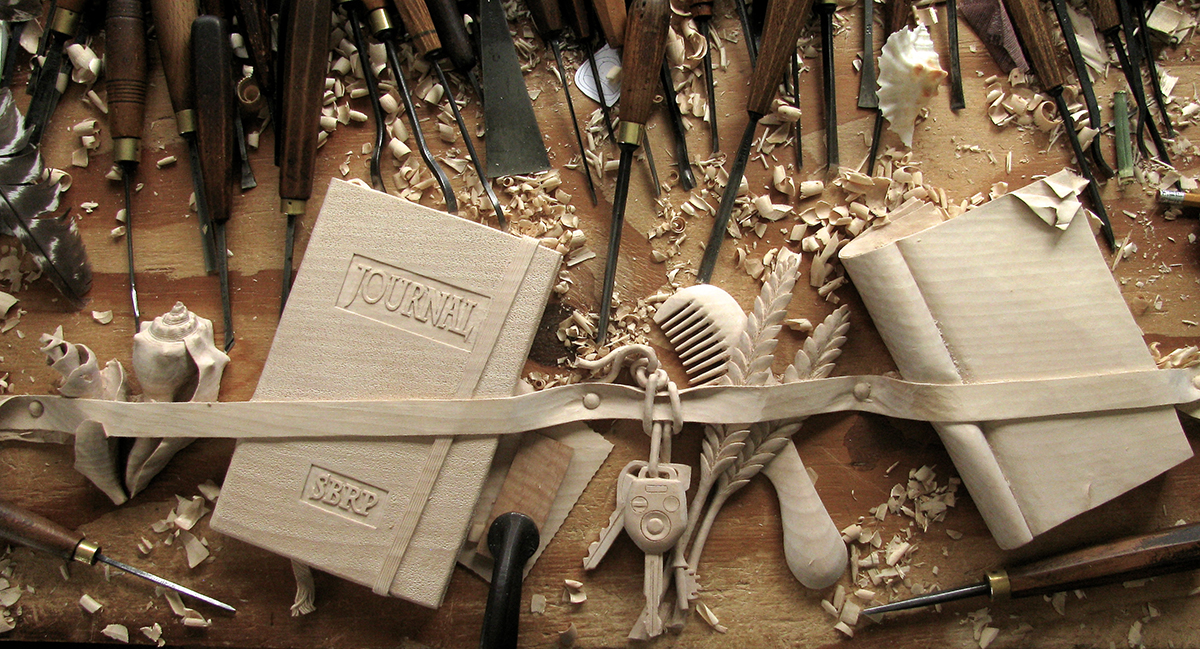
“Leaving his mark” – CBS Sunday Morning
CBS Sunday Morning produced a feature about the “gibbonsy” woodcarver wood sculptor David Esterly. The program aired Sunday June 2, 2019.
A fitting tribute, but far too short. Annoyingly superficial! Yes, the typical art feature on CBS Sunday Morning is usually only about 5 to 6 minutes, but for goodness sake this is about someone and something important to us. Give us more!
The feature actually covered the 4 major genres of Esterly’s carvings, but in a very superficial way; brief glimpses of only a single carving from each genre, too little information about how he came to adopt those genres and what they mean to him.
We can understand how the pursuit of being “gibbonsy,” as he describes it, led him to the floral and fruit genres that are distinctly his more than they are of Gibbons. But what inspiration led him to the trophy carvings, or to botanical heads, or to letter racks? Even a few more seconds on any of these would have made the feature far more interesting.
BTW: CBS also produced a print version of the article.
David Esterly – RIP (1944 – 2019)
It has been only a few weeks since learning that David Esterly had been struck with Amyotrophic Lateral Sclerosis. This incurable degenerative disease usually takes quite some time to claim its victims. What we did not know was when David was diagnosed, apparently kept quiet for many months. It was a sad surprise to learn that he passed away on June 15, so shortly after many of us learned about his affliction.
A tribute from Joel Moskowitz, of Tools for Working Wood.
An obituary from the New York Times.
Personally, I am extremely grateful for having had the very good fortune to meet David and come to know him, even if only slightly. We met in person once, for a few minutes at the showing of the boxwood miniatures at New York’s Cloisters, and we had several email conversations regarding our shared interest in Gibbons. He was very generous in allowing me to copy all of the images you see here. His statement of “I take refuge in my work” rings loud and true. I find tranquility in carving, even if it is only to turn good wood into firewood. The connection between brain and hand, seems automatic, and exercising it is calming.
Videos I found interesting:
- Artists Do Not Stand on the Shoulders of Giants. (2:08) [focus: Gibbons]
- Type 2 creativity … a TED talk (20:06) [focus: florals, trophies, letter racks, thunderbolts, process, adventure]
- Woodcarving: A Master Class (3:23) [focus: process]
Other resources:
- David’s website: http://davidesterly.com/
- David’s Facebook: https://www.facebook.com/DavidEsterlyAuthor/ (inactive since 2014 – he’s not a fan)
- Harvard Magazine: “The Art of Subtraction”
- National Public Radio interview: “Re-Creating the The ‘Lost Carving’ Of An English Genius”
- Old blog for pictures NOT in the Lost Carving book: http://thelostcarving.blogspot.com/ (There are also illustrations of layers on this material.)
- About Esterly and several of his interests here (Financial Times)
- His interest in letter racks here (Antiques magazine – long)
- The Thomas Jefferson letter rack here (Antiques magazine).
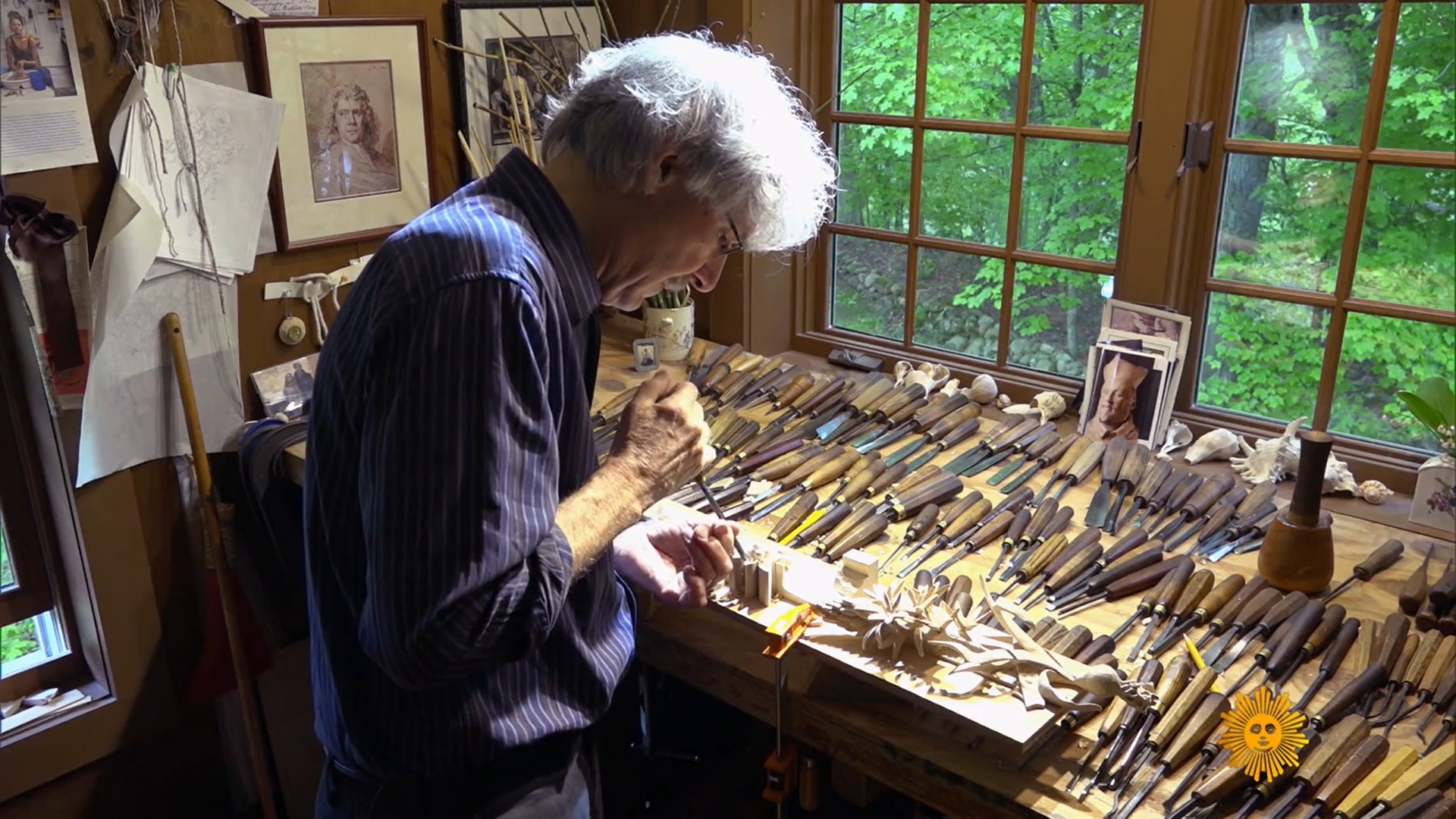
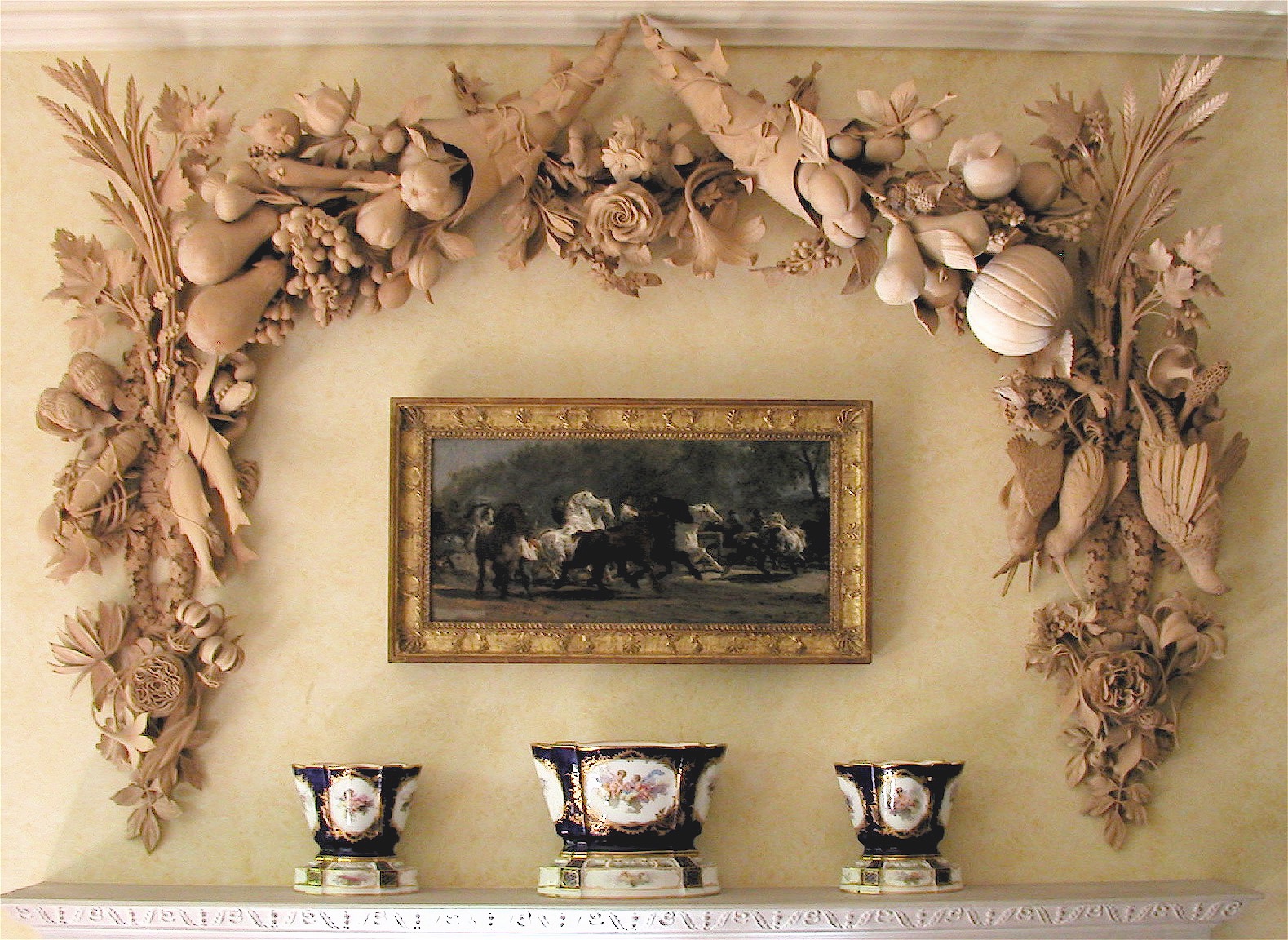
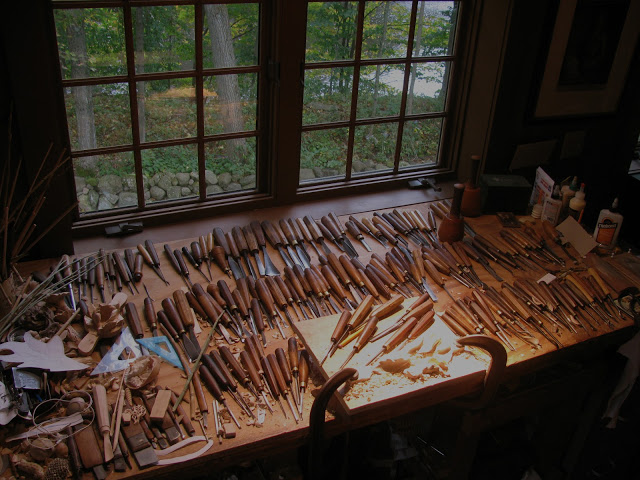
Your comments are welcome: